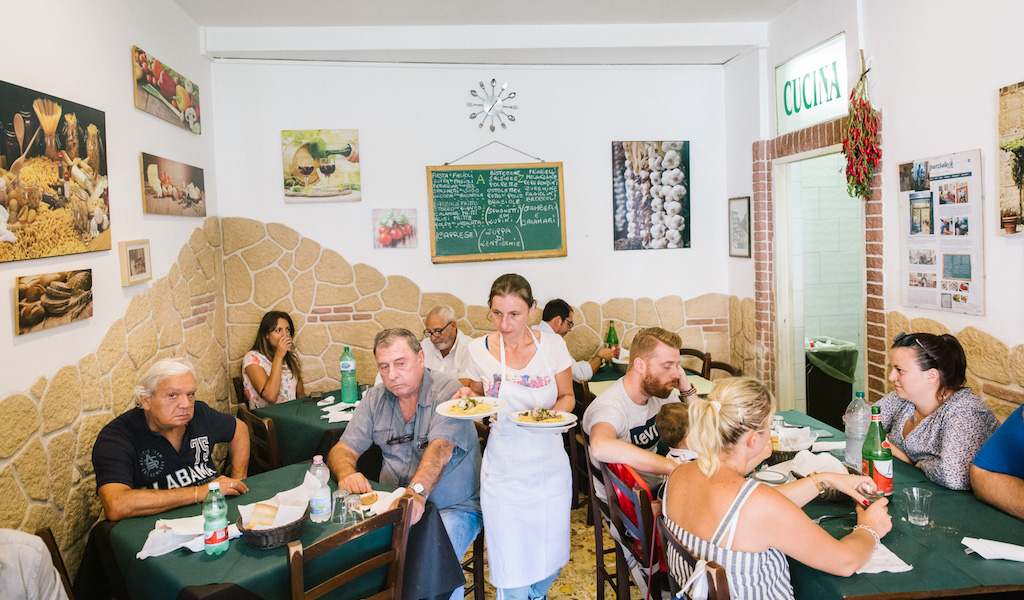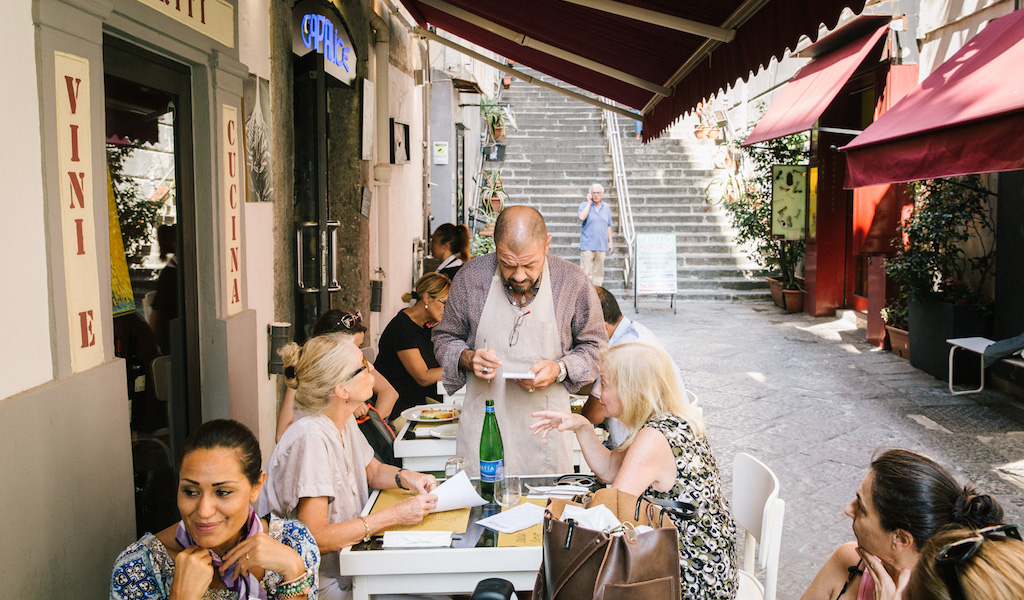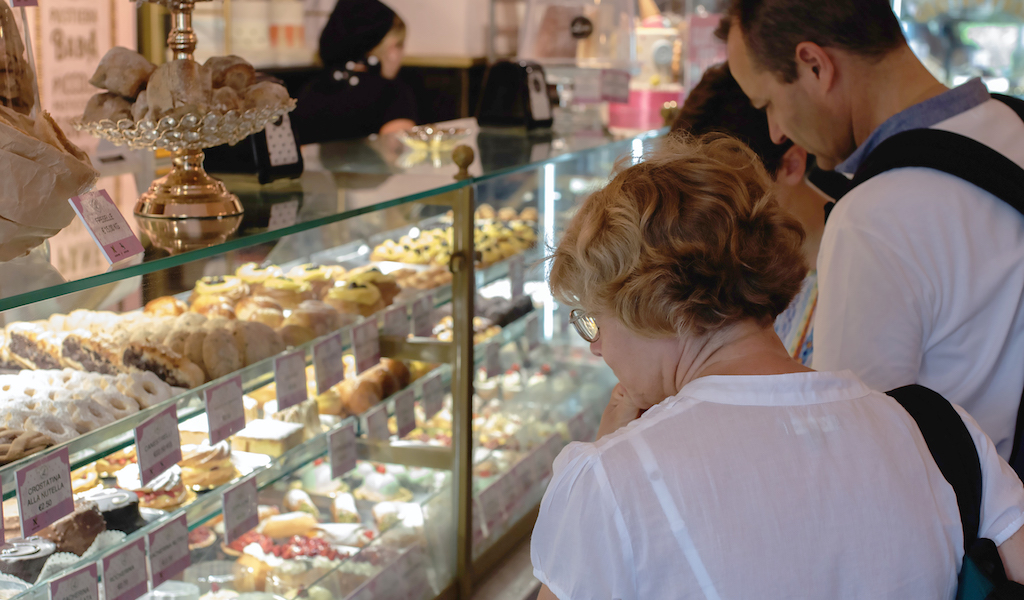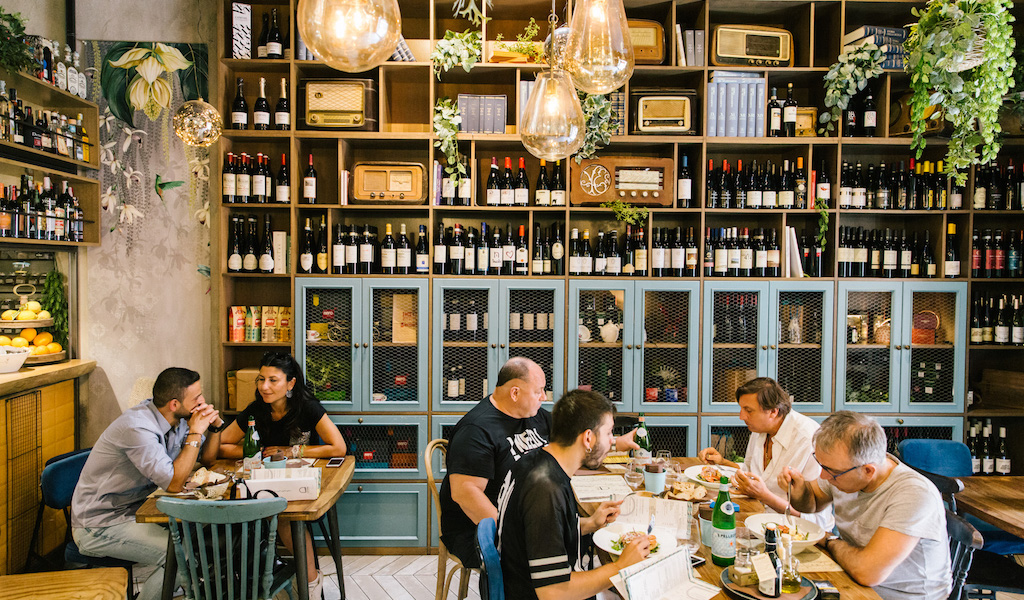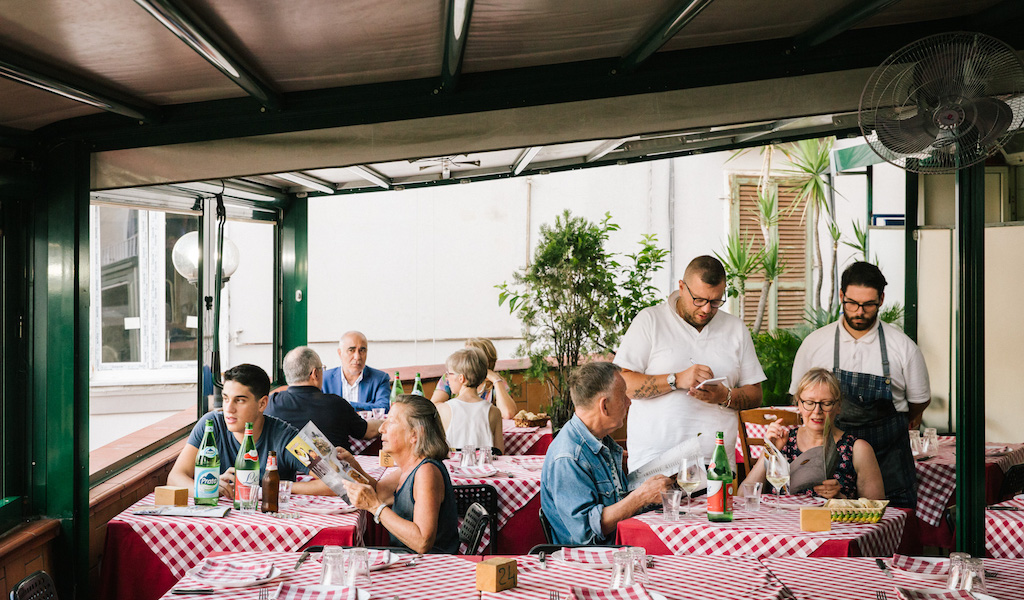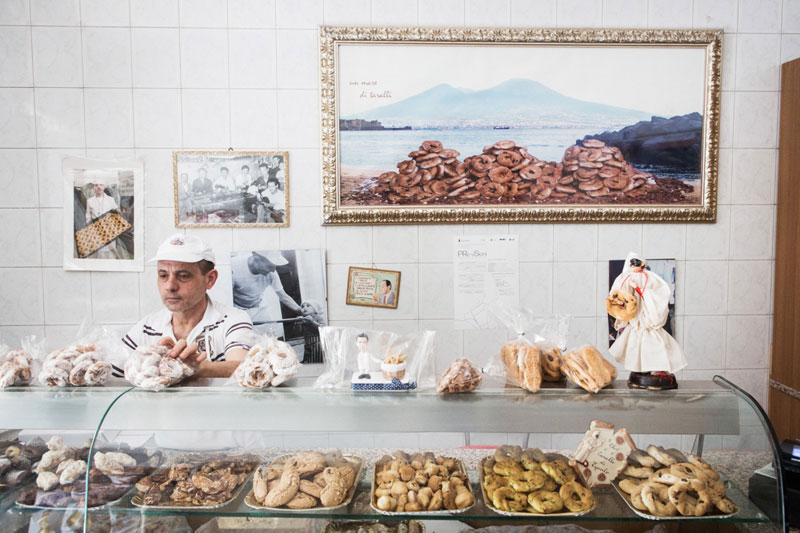We can't find the internet
Attempting to reconnect
Something went wrong!
Hang in there while we get back on track
Search results for "Amedeo Colella"
Naples
Wine Harvest 2019: Cantine dell’Averno, A Volcanic Vineyard
Imagine the most extraordinary location for a vineyard that you can. Got an image in mind? Well, we think Cantine dell’Averno, a four-hectare vineyard in Pozzuoli, has it beat: Not only are its vines growing inside the caldera of a volcano that is theoretically still active, but they also surround the ruins of a Greek temple. We are on the shores of Lake Avernus, a volcanic lake that formed thousands of years ago and is part of the wider Campanian volcanic arc, which includes the Phlegraean Fields. It’s a place shrouded in an aura of mystery – legends and tales about this somewhat eerie body of water have been passed down since antiquity.
Read moreNaples
Cucina da Vittorio: West Side Story
The typical Neapolitan trattoria is a place where you go to eat like you would at home: the cook buys everything fresh in the morning, just like at home, and then spends the rest of the day in the kitchen, which he rules like a maestro. For the quintessential trattoria experience, we head to Fuorigrotta, a working-class district on the west side of Naples. There, close to the border with the seaside suburb of Bagnoli and not far from the Cavalleggeri Aosta metro stop, stands Cucina da Vittorio, a small trattoria with a few tables and a steady rotation of regular customers.
Read moreNaples
Cap’alice: Small Fish, Big Taste
The seaside district of Chiaia, perhaps best known for Via Caracciolo, a boulevard with sweeping views of the Bay of Naples, is the most elegant neighborhood in Naples. Long the seat of the Neapolitan aristocracy, the area is studded with Art Nouveau palaces, elegant boutiques, and Villa Pignatelli, a house museum with an impressive art collection. But our favorite corner of the neighborhood is Piazzetta Ascensione, a quiet little square at the top of Via Ascensione (the Latin phrase nomen omen, “the name [is] a sign,” applies here, so be ready for a climb). It’s so dear to us in part because there’s a small, charming restaurant just off the square, one with a very distinctive name: Cap’alice.
Read moreNaples
Leopoldo Cafebar – Senza Glutine: Inclusive Baking
One of the problems for travelers with celiac disease is that they often can’t taste local gastronomic specialties. This is particularly true in Naples, a city famed for its pizza and pastries, such as the mythical babà; pastiera, the queen of Neapolitan sweets; and the ancient sfogliatella. Until about 20 years ago, it was very difficult for someone with celiac disease to eat in Naples; the number of restaurants equipped for gluten-free cooking could be counted on one hand, and they often had to resort to processed food products sold in pharmacies.
Read moreNaples
Cisterna Cafè & Bistrot: Sitting Room Only
The typical Neapolitan breakfast is fast, often consumed standing at the espresso bar. A croissant and a quick coffee – and, boom, the day begins. Many people in the English-speaking world, however, will use coffee bars and cafès as a place to relax or work. They bring computers, connect to the Wi-Fi and, ordering just one coffee, may even sit for hours. Three years ago, a group of entrepreneurs decided it was time Naples had a bar where people could indulge in a lazy morning breakfast, a slow midday meal or a long afternoon tea – a place where the chairs are comfortable, the tables are an inviting wood and you are encouraged to stay and make your phone calls, write your papers and chat with friends.
Read moreNaples
Totò Eduardo E Pasta E Fagioli: Tradition, With a View
The Neapolitan stairs are ancient urban routes that connect the upper city (the Vomero district) to the lower city (the historic center). The most famous of these stairs is the Pedamentina di San Martino, a staircase of 414 steps dating back to the 14th century, which starts from the old center and reaches the Castel Sant’Elmo, on the Vomero hill. Along the way there are beautiful panoramic views of Naples. One reason to walk these Neapolitan stairs (besides the views) is to look for Totò Eduardo E Pasta E Fagioli, an old tavern with an amazing terrace overlooking historic Naples. The name is dedicated to two great masters of Neapolitan theater and cinema: Totò (Antonio de Curtis) and Eduardo de Filippo.
Read moreNaples
Taralli: Lard Almighty
The rustic Neapolitan tarallo, made of 'nzogna (lard), pepper and toasted almonds, is a true delicacy. It can be considered the first popular snack in Naples, a bite that combines the punch of black pepper with the sweetness of almonds, the whole united by lard. It’s a dangerous combination for the waistline, that’s for sure. Taralli are offered to celebrate a new home, shared with friends during soccer matches, enjoyed with one’s significant other on the rocky shore, given to guests at parties, taken aboard boats (it’s the very height of yuppiness to eat them accompanied by iced spumante while out at sea). Until a few years ago, taralli were sold by tarallers, roving vendors who carried a basket full of taralli on their heads.
Read more
